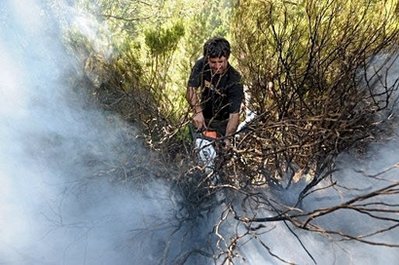
© AFP/Stephan AgostiniA volunteer from Olivese, a village nearby Aullene in Corsica, cuts off a bush with a chainsaw, helping firefighters to prevent the fire in la Vacca mountain from crossing the other side of the valley. Firefighters battled blazes in five countries along the northern Mediterranean rim Sunday, slowly gaining the upper hand after an exhausting week that left eight people dead.
Rome - Firefighters battled blazes in five countries along the northern Mediterranean rim Sunday, slowly gaining the upper hand after an exhausting week that left eight people dead.
Tens of thousands of hectares of countryside have been devastated mainly in Italy, Spain, France and Greece with initial estimates suggesting that the insurance bill may already run into hundreds of millions of euros
New fires were sparked Sunday in some of the worst hit areas, but also in Croatia, with the latest again blamed on arson following recriminations over criminal fire-starting elsewhere.
On the scorched Italian island of Sardinia, as many as 25,000 hectares (60,000 acres) have been razed by a flaming inferno fanned by high temperatures and an extra-strong Mistral, a fast and dry northerly wind.


